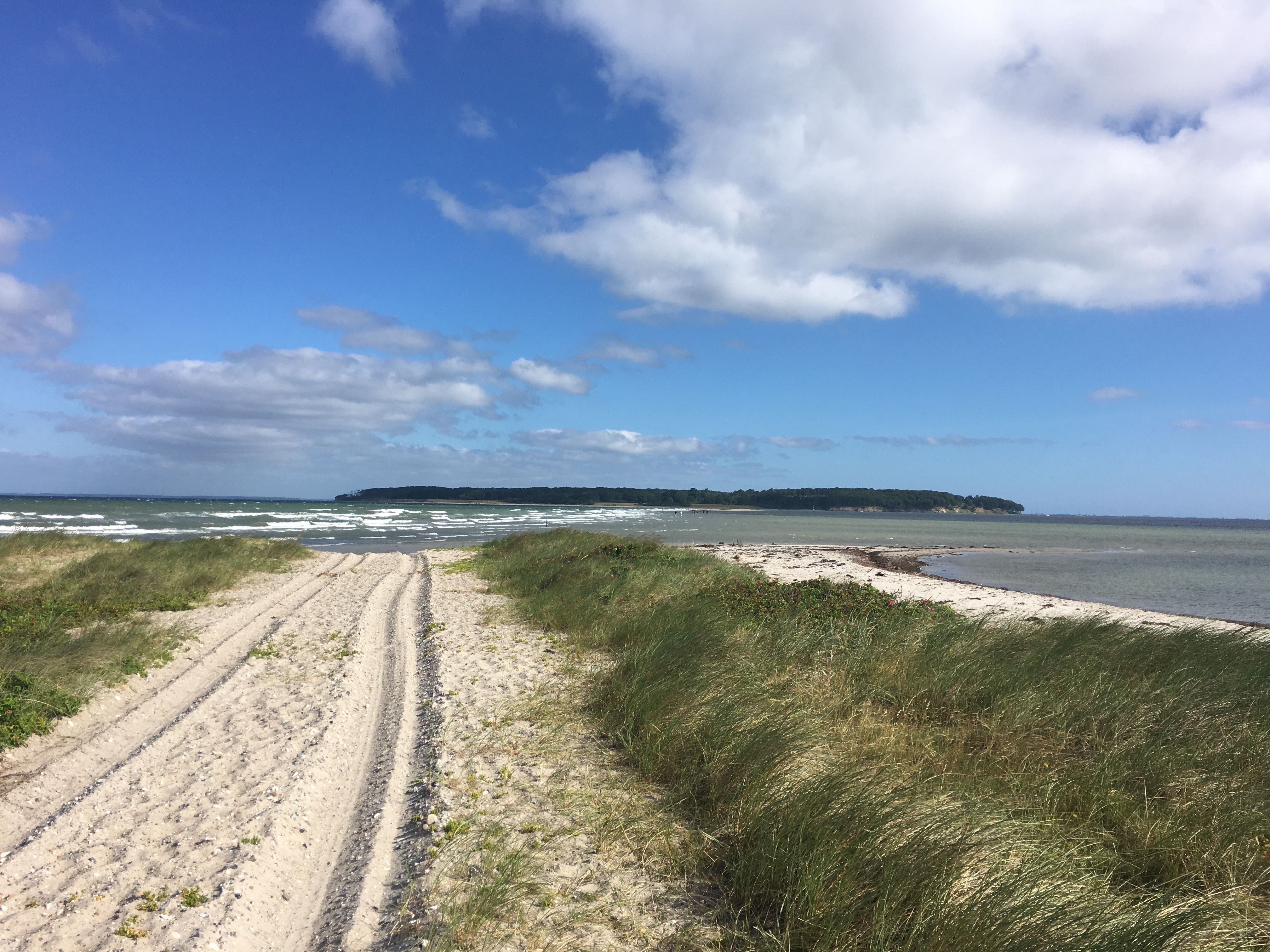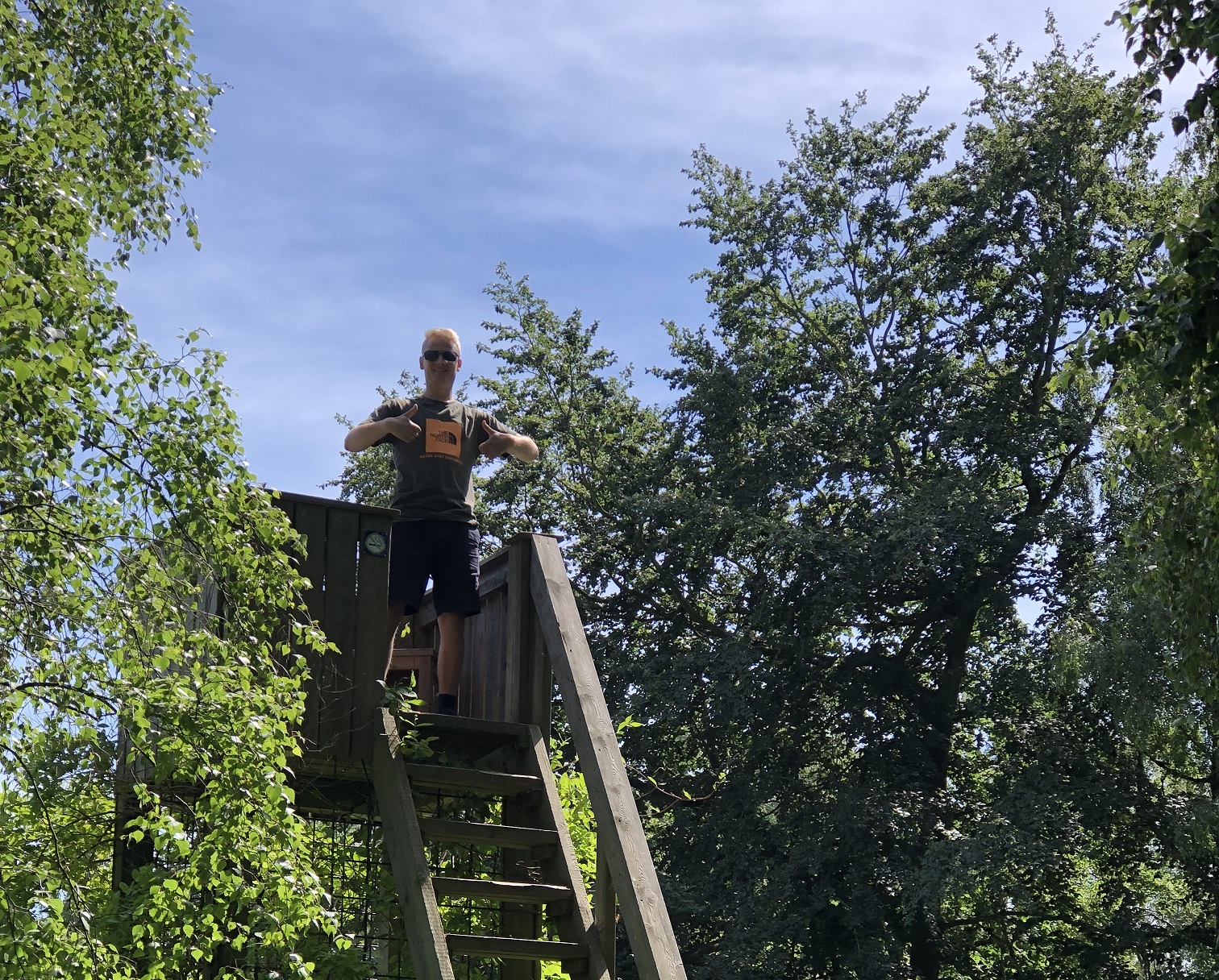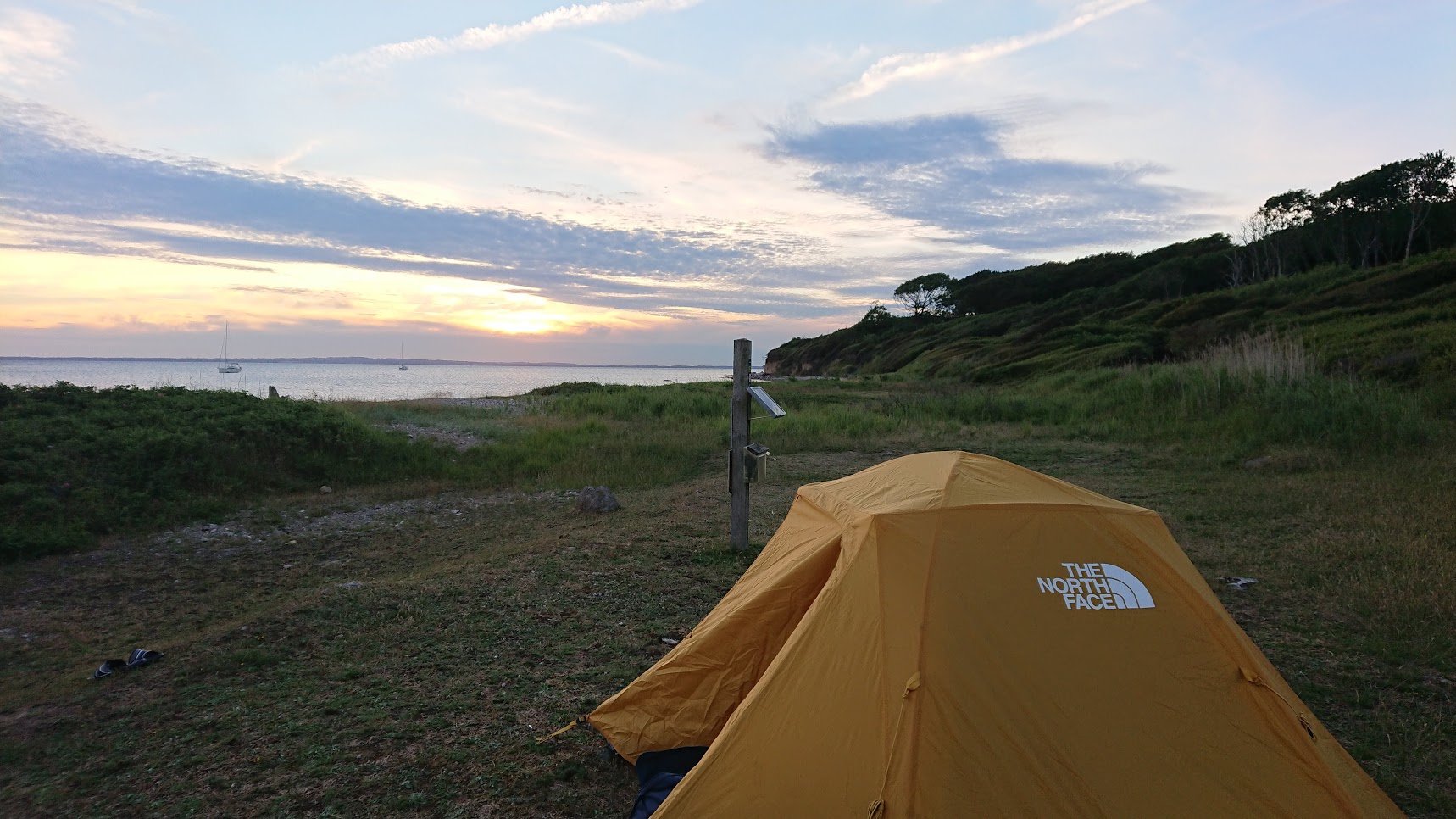I had long wanted to go back to the island of Æbelø since the first time I was there, a small nature reserve, located in the waters just north of Odense.
So in late June, in the summer of 2019, it happened. Me and a friend headed out to the island after several weeks of organizing and preparing for the trip.
The way you get there is rather unique, as you have to walk about 2 kilometers through sea water, during low tide of course. I would recommend, for your own advantage, to do some planning ahead of time as it's important to check when there is going to be low and high tide, in order not to get stuck on the island.
Are you curious about the island or are you planning to go there too?
You have come to the right place! I will explain everything there is to know about the island; are there any toilets? How do you get water? What is there to see? I will even include all the gear I brought on the trip so you can be extra prepared. Let's begin!

1. Planning the trip
Right of the bat, the most important preparation for this trip is to check the low and high tide, which is available online here, along with a lot of other useful information about the island.
Once that you have have settled for a date, the next thing on the agenda is to seek permission to sleep there (you can skip this if you are not going to sleep there), as they have dedicated a camping spot on the island that you have to use. You can apply for permission here. Once that has been settled, let us take a look at what you need to make sure to bring for the trip.
What to bring for the trip
Lets start preparing the things you will need to bring for the trip. As the island is a nature reserve, there is no infrastructure there, which means, there is no toilet facilities or running water present. I made up a short list of some of the most important things to keep in mind:
- Bring some good footwear
- Pack enough food and water
- Some sleeping equipment
- You preferred tent or camp setup
- 1 set of spare clothes
- First aid kit
Make sure to bring adequate footwear, as you will need both submerge able shoes for the rock filled water-crossing, but also some for when you reach dry land. The first time, I wasn't fully prepared for the water-crossing, so this time I had a pair of extra shoes on the backpack so I wouldn't have to walk around in wet shoes when we reached dry land.
Adequate footwear is not flip-flops, trust me.
For the food, I brought enough to last me 24 hours. I decided not to bring any spare, as in our case, it was just a single-nighter and we would be home again by the next day. But, if you plan to go on a trip lasting multiple days - make sure to bring some spare food.
For water, I brought about 3 liters for the trip, which was more than sufficient for the duration we were there, but it all comes down to personal preference of course. Will you be using water for cooking? Make sure to take that into account.
If you are going to sleep on the island, also bring some sleeping equipment and your preferred camp setup. In my case, I brought a 2-person tent, The North Face Stormbreak 2, a sleeping bag and an inflatable sleeping pad.
Make sure to bring a first aid kit.
The first time I went to the island, I cut myself on the rock filled water-crossing, due to improper protection. So as I quoted just before, don't bring flip flops for the water crossing. In fact, when I made it a little further inland on that trip, I also ran into a couple who were in same situation. The first aid kit proved very useful in cleaning the wound and taking care of the bleeding.
For this trip I also brought along something extra: some video equipment to document the trip, which is something I had not tried to do before.
Find out how you are going to get there
You have two options when it comes to getting there.
Option one is to go by car and park close to the beach. There is a parking lot right next it and it has free parking, so don't worry. You just leave your car here for the duration of the trip.
Option two is to go by either bike or bus. Nearest bus station is in the town of Bogense, and from there, it's a 45 minute drive on bike to the starting location. I would recommend to bring your bike(s) in the bus, like we did.
2. Doing the actual trip
You are prepared, you have read up on the low and high tide and you have made it to the starting point. Alright, let's go then!
The sea crossing is one of the exciting parts of the trip. To all luck, the weather was good and also not too hot, making the water crossing bearable. The sea crossing is done in two sections.
The first section is around 1.5km and is what I call "the soft one", as it is pretty much just super soft sand on the ocean floor. The route in the water is marked by poles in the water, so don't fear you will wander off-course - the poles will guide you.
In between the two water crossings is a smaller island (Æbelø Holm). Follow the gravel road once you make it here to make it to the next crossing - the rocky one.
The second section is the difficult one - remember I said flip-flops are not appropriate footwear? This is it. Take out your submerge-able shoes, because you will need them. The rocks are sharp and they are also often very slippery so you better proceed with caution here. One wrong step can result in you, and the whole of your backpack, getting soaked (and cut, ouch). Once you endured the hellish crossing, you will be greeted by sand beaches on the main island, Æbelø.
You made it. What to do and see at the island?
Making it to the island makes you feel a sense of relief. You are out of the water and back on solid ground. Right at what I call, the grand-tree, you will find a map of the island. If it's your first time there, I recommend taking one, as it shows all the major things to see and all the hiking routes.
I heard it is particular popular with bird watchers, as the island and the surrounding isles, is a breeding ground for birds during certain times of the year. I put together a list of some of the highlights.
Some of things to see on the island
- There is a ship wreck at the southern side of the island
- An old lighthouse
- On the northern side, the water is red because of the exposed clay
- Several good spots with scenic views
- Several lookout towers
- A central freshwater lake
- A lot of different animals
- Remains of a decommissioned harbor



You quickly notice how different the nature is compared to the average inland forest, as dead tree trunks and fallen objects are not removed in order to let nature do it's thing.
The walking paths are clearly marked as the grass is cut short, so you don't walk in grass to your knees. They prefer if you stay on the marked paths as you might accidentally ruin some nature or plants by venturing off the trail, so if you intend to do it, make sure to take care of your surroundings.
Finding the first lookout tower
In about the center of the island you will find a tower overlooking a lake, with a nice view over the terrain. It's a little hard to get to because of all the vegetation that grows here in the summer, but it's doable. This is also one of the most suitable "instagram" locations for some cool pictures! The surrounding area has a rather exotic feel to it, with the dense growth of vegetation. At the top of the tower there is a wooden chair.


About 200 meters further down the path from the first tower, there is a second one, overlooking a wide open area, but this was inaccessible for us as it was completely overgrown with plants.
The campsite
After spending several hours exploring the island, we reached the one dedicated camping spot on the island. It's located about 30 meters from the beach and has a large open area with more than enough room to set up a few tents.
The campsite has a nice beach right next to it - you can cool off in the water here and have a well deserved beer (which you did bring, right?) at the beach, while you watch the sunset (it's incredibly beautiful). There is also a fireplace here, but we didn't make use of that.
Never cut down trees or plants for firewood, this is considered illegal.
Setting up camp
Setting up camp didn't take too long, and once the tent was standing in all it's pride, we took some time off to relax a little.
It's worth to mention, that the campsite does not have any suitable vegetation to support a hammock or a tarp, so take that into consideration if you plan to bring that along. As it got darker, we started to see the lights of the ships passing by on the horizon and, to our suprise, we started to see a lot more animals - they become more active in the evening as they search for food. We even had a small fox visit our camp at one point.
Edit (24-05-2021): Camping on the island is no longer allowed.
I am not a fan of this decision, I have always had the most respect for the nature on this island and never left a trace. Unfortunately it looks like this was the last camping trip I made to the island for a while.

Cooking on the island
If you want to cook food on the island, you have a few options. Either use the dedicated fireplace or bring a stove. I opted for the latter and brought a small Trangia stove, which uses an alcohol based fuel. Freeze dried meals work just fine here - I'll leave it up to you what you will bring.
Oh and one last thing, please do not throw your trash away on the island, it is a nature reserve.
3. The return trip
It's getting low-tide again, so it's time for our return trip.
The next morning, we had some breakfast and packed down the campsite. The tide would be at it's lowest around 10:20 in the morning, local time, so we couldn't fool around too much. We waved goodbye, one last time, before we started the descend into the ocean water. We made it back to the mainland without any issues.
If you plan to visit the island, here are some tips to make the most out of it
- Don't go alone, it's much better with some company
- Everyone can go, you don't have to be particularly fit to embark there
- Bring a camera - or a smartphone as minimum
- Forget about your day-to-day life and immerse yourself
The island is a perfect candidate for a weekend trip, as it offers just enough to explore for about one day. Doing a sleep-over on the island is the sweet spot, as you don't have to rush to make it all around the island in one go. So pay a visit to Æbelø one day, it's practically free to visit the island and a way of getting away from every day life.
I hope this post was helpful to you - and keep on exploring! Cheers, André.